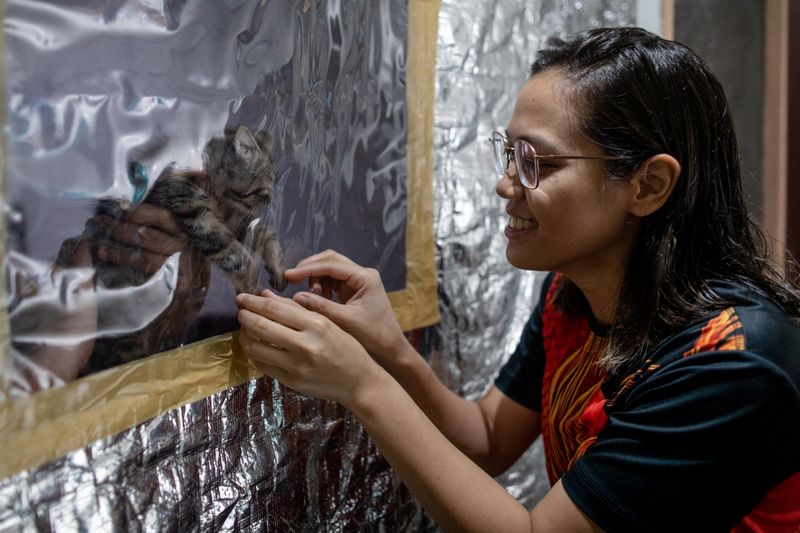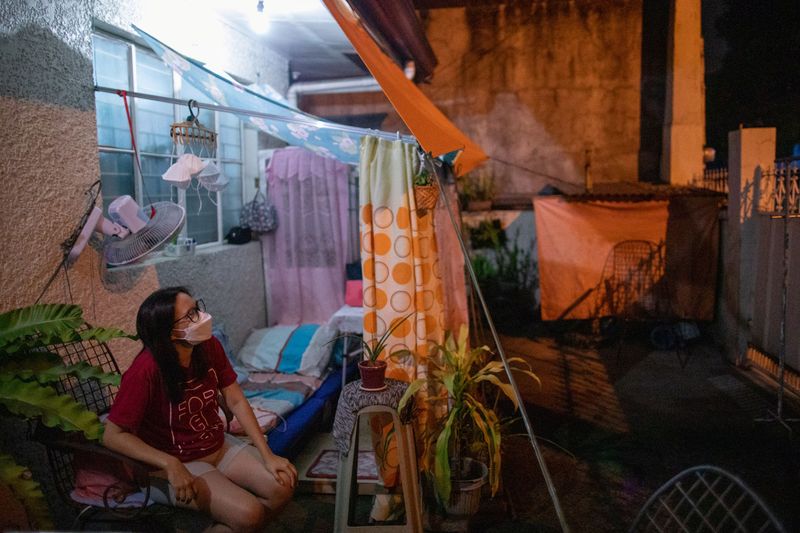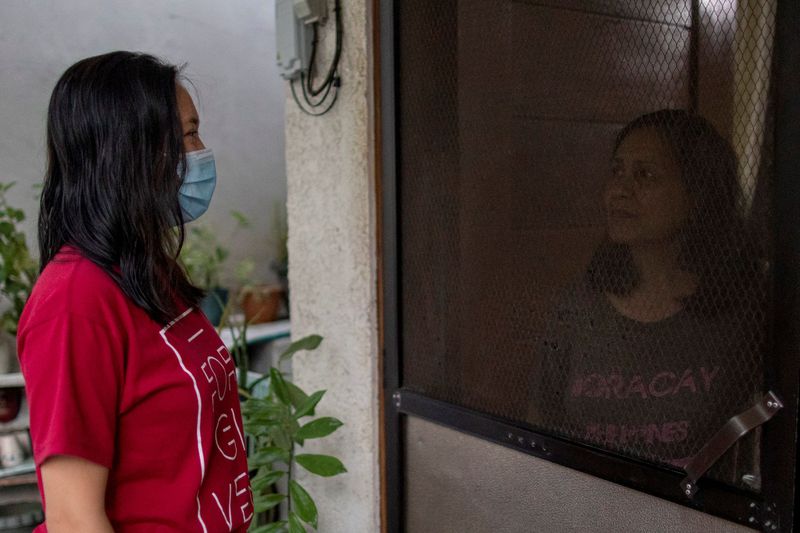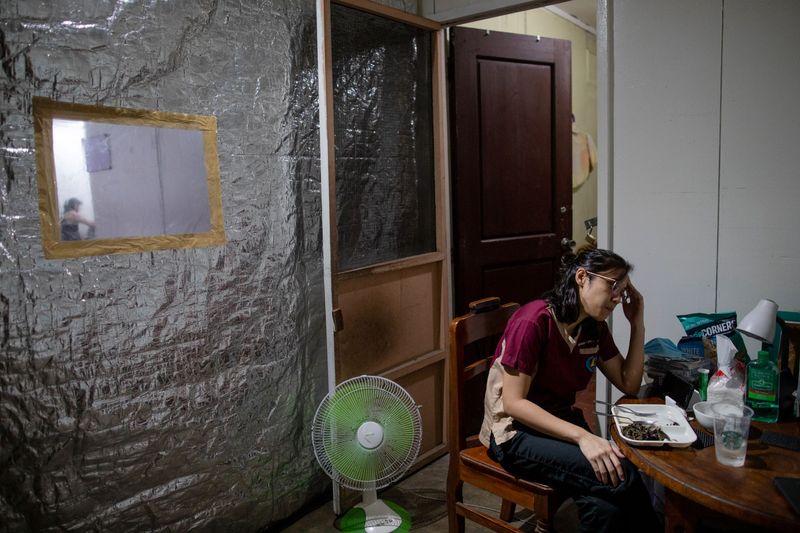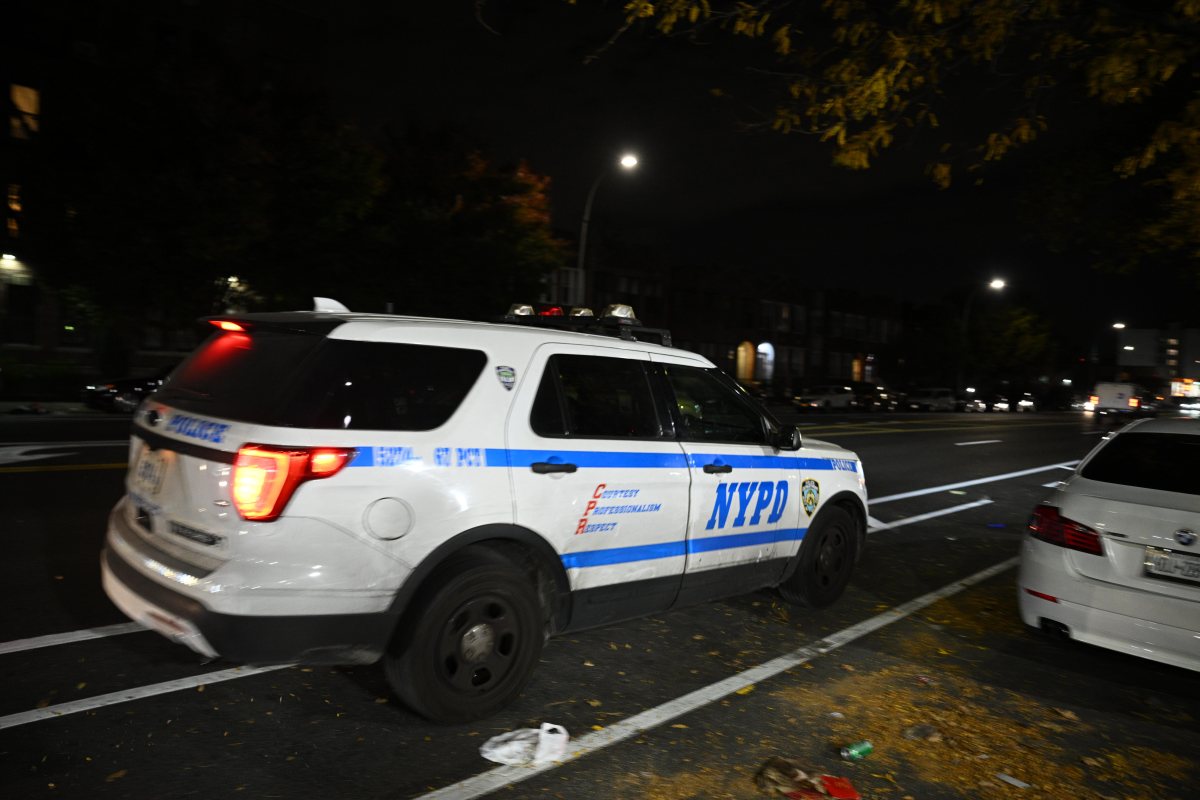MANILA (Reuters) – After taking a job in a hospital’s COVID-19 emergency room, Philippine doctor Jan Claire Dorado planned to move out of the family home to protect relatives from the risk of infection.
But Dorado’s parents insisted the 30-year-old keep living at home, so her father constructed a makeshift isolation area in a storage room there.
Now, when she returns from work at one of the country’s main hospitals treating coronavirus patients, her dinner is placed outside the room’s door on a stool.
“The hardest part is being away from them. I miss them a lot,” said Dorado, who greets family members from behind a plastic window on a wall covered in foil.
Her parents are considered high-risk for COVID-19 because of preexisting conditions, and Dorado said she once painfully refused her mother’s request for a hug.
Hundreds of Philippine medical workers have been infected by the coronavirus and more than 30 have died.
Safekeeping loved ones is also a high priority for paediatrician Mica Bastillo, even as she confronts COVID-19 head on.
The 38-year-old took on a new role at a children’s hospital in another part of Manila after it became a COVID-19 referral facility in April.
“My family thought about asking me to resign, but anywhere I go I would still have to face COVID,” she said.
With her father and sister battling medical conditions, the family built a makeshift tent next to their home for Bastillo, which they dubbed a “quarantent”.
Made out of plastic sheets to keep out the rain, it allows Bastillo to be with her family at a safe distance.
“My mother put the curtains and the table cloth to make it look like home… And my brother added the plastic sheet. It was a real family effort,” said Bastillo, who still joins her family for nightly prayers seated beside the front door wearing a mask.
(Additional reporting by Neil Jerome Morales; Writing by Ed Davies. Editing by Gerry Doyle)

